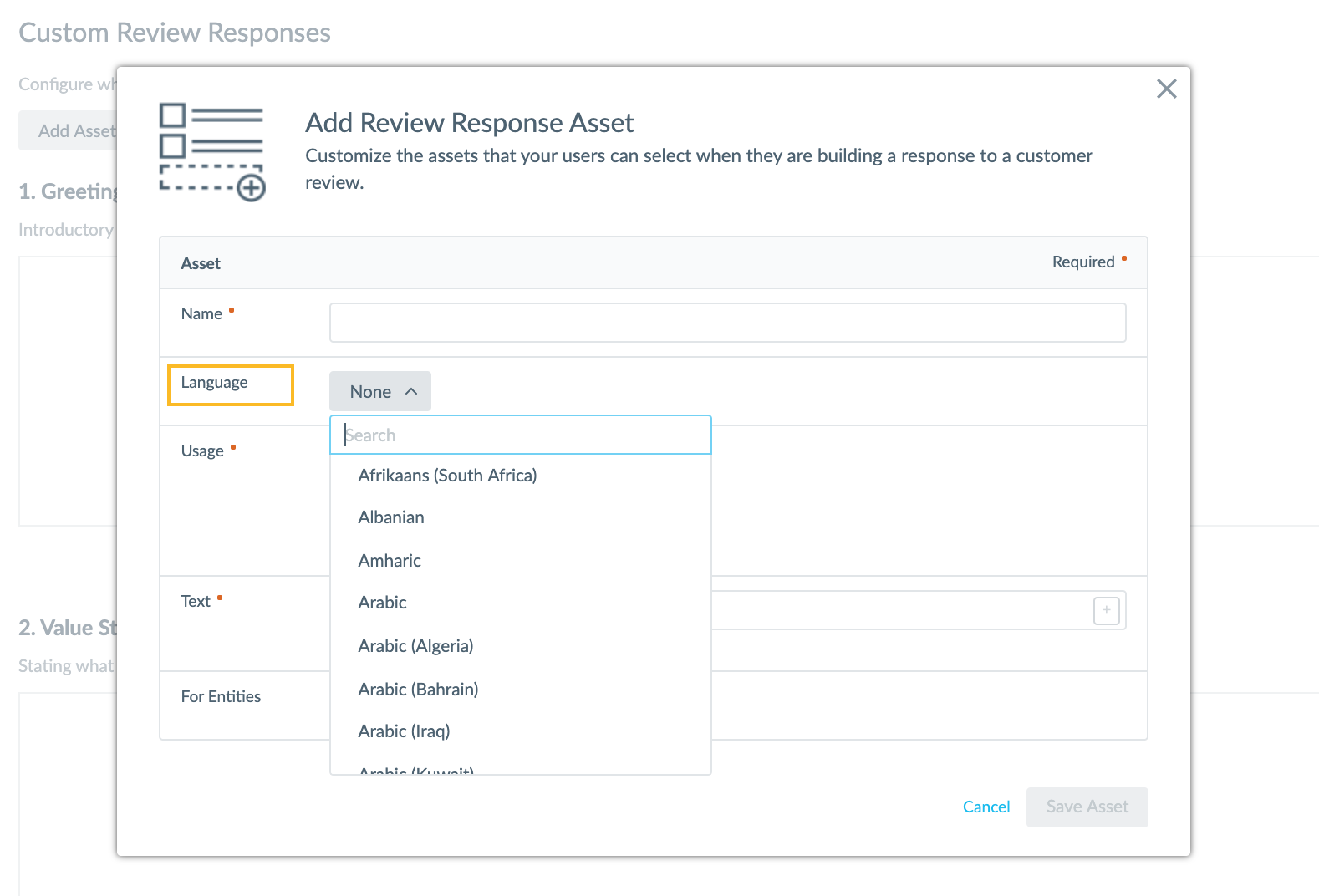Multi-Language Reviews | Yext Hitchhikers Platform
What You’ll Learn
In this section, you will learn:
- How Yext supports multi-language review monitoring
- How to manage review response assets in multiple languages
- How to send review invites in multiple languages
Overview
Reviews will be pulled into the platform, regardless of what language a user writes the review in. You are also able to respond to reviews in whatever language you choose.
Language nuances impact Review Response assets, Review Generation, and Sentiment Analysis. This unit focuses on the language nuances in each of these areas. For more detail on any of these Review features, visit the Reviews track .
Review Response Assets
Templated Review Response and Review Response assets are two ways to respond to reviews that pull from pre-written responses, rather than manually typing a new response.
Both Templated Review Response and Review Response assets use Assets to create pre-built responses. When you are creating Assets, you will have the option to select a language. When you select a language, the asset you are creating will only be available for reviews that are identified in that language. Assets without a specific language (meaning the Language is set to ‘None’) will be available for all reviews.

Depending on the languages spoken by your customer-base, you may have to create multiple assets — one per relevant language. For example, you may create an Asset that contains the text “thank you for the great review, we hope to see you again soon!” and then create a second asset that has that same message, but in Spanish, as seen below.

Then, because we are able to identify the language of the review that is pulled into the platform, when you use an Asset in your response, the system will only display Assets assigned to the language of the review.
Review Generation
When generating reviews, you have the option to select which language the request should be sent with.
The language you select will ultimately depend on the language the customer speaks, but default review generation templates are available in English, German, French, Spanish, Italian, Dutch, and Japanese.

Select a Language for a Single Review Invite
When you navigate to the Send Single Invite section of the Review Generation page, you will see the drop-down option to select your desired language for the review invitation. As you select the desired language, the preview on the right side of the screen will update to display the content in that language. By default, this will be set to English.
Note that the option to select a language is only available for default email templates. If you create a Custom Review Invite, you will need to enter the content in your desired language, as we will not provide translations on your behalf.
Select a Language for a Multiple Review Invites
When uploading a spreadsheet of review invitations, you have the option to specify the language you would like to send the invitation in. This option is visible as the last column in the template, titled ‘language’.
Languages need to be added in the ISO 639-1 Code format. For example: en for English, es for Spanish, fr for French, etc.
Review generation templates are available in English, German, French, Spanish, Italian, Dutch, and Japanese, and the ISO language codes are: en, de, fr, es, it, nl, and ja accordingly.

If you leave this field blank in the spreadsheet, it will default to English. Additionally, this column can only be filled out when you are selecting a default invitation template. If you choose to send a Custom Review Invitation email, the system will send the content that you have uploaded, regardless of the language it is.
The language code is also a parameter that can be configured in the API, if you are using the API to send review invitations. You can read more about that in the Review Invitations: Create API endpoint in our Developer Documentation.
After generating reviews, and receiving responses, the review will be pulled in whatever language the user leaves the review in. This content will then be visible in that language, and can be added to your website via Review Publishing.
Sentiment Analysis
The last component of Reviews is understanding the content of the review. As a quick refresher — Sentiment Analysis uses natural language processing to identify important keywords in your customers’ reviews and assigns a positive or negative score based upon the modifiers describing the keywords.
Reviews are pulled in regardless of the language of the content. When the reviews are pulled in, the platform is able to identify the language of the review so you can see and respond to the review with the corresponding language Assets.
However, Sentiment Analysis is only supported in English, Spanish, and Japanese. So, while we can pull in reviews regardless of the language of the content, we can only derive the sentiment score for a subset of languages.
Which of the following will be translated by Yext:
True or False: When sending multiple review invites, you can only upload a list with one language at a time?
You're a star! ⭐

